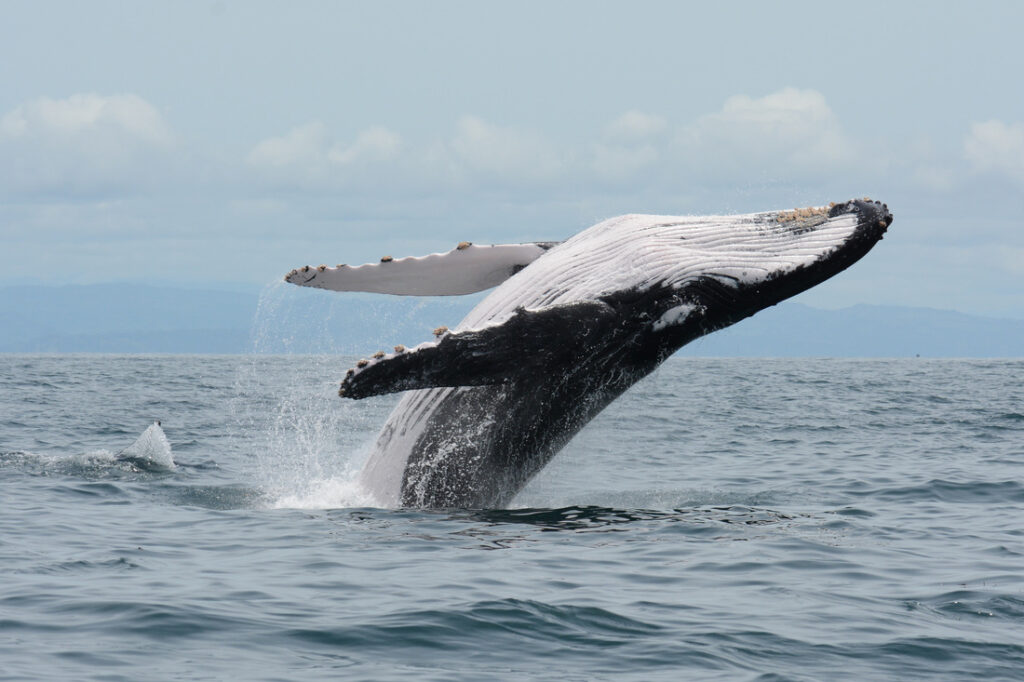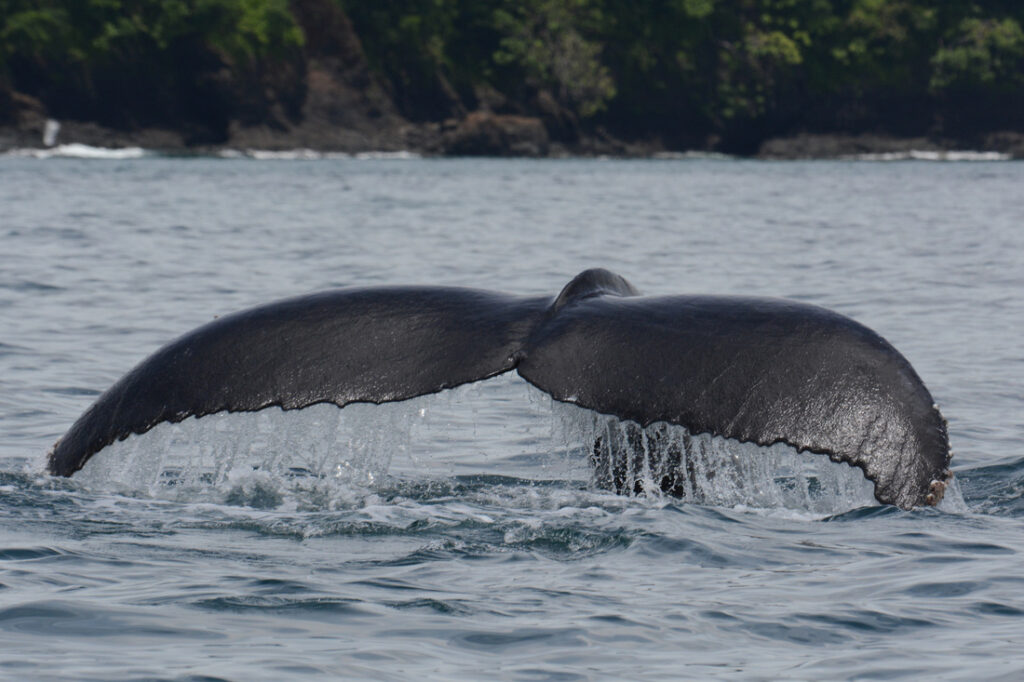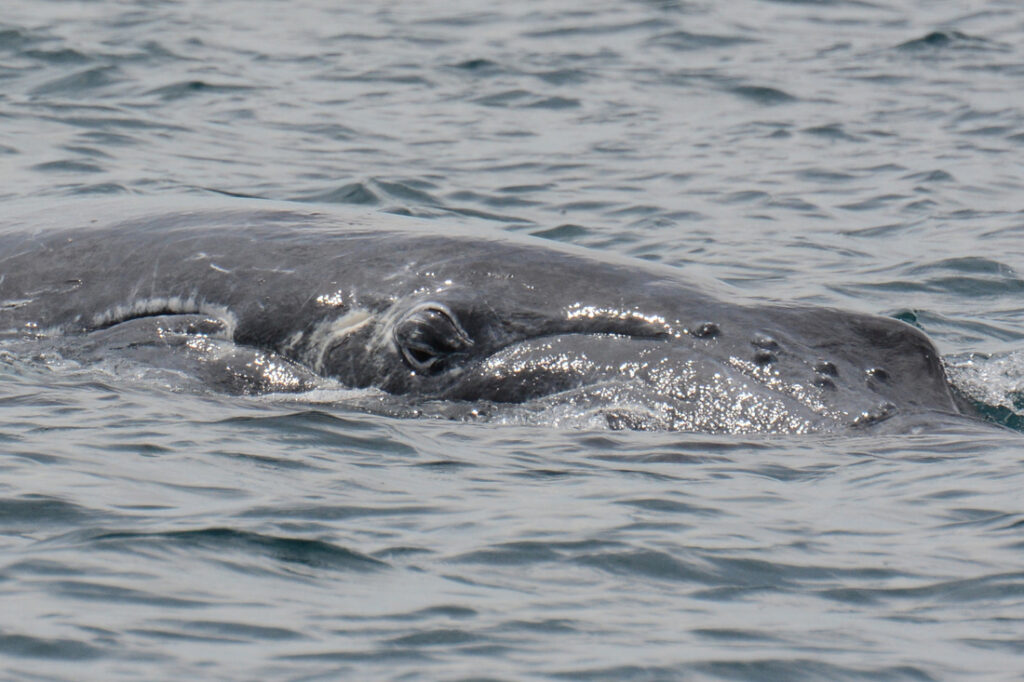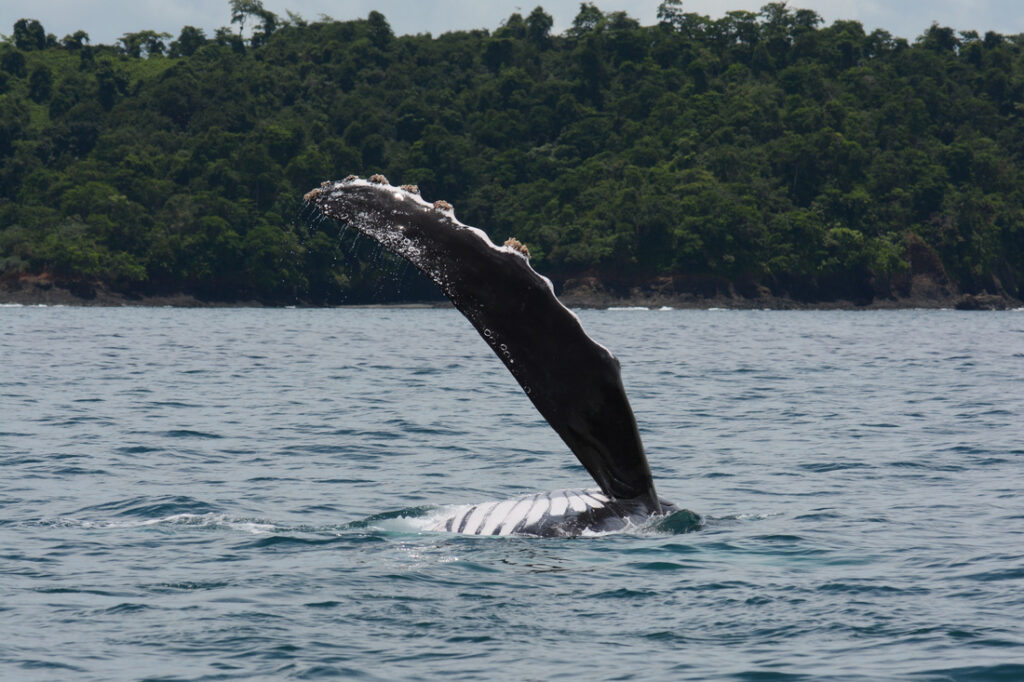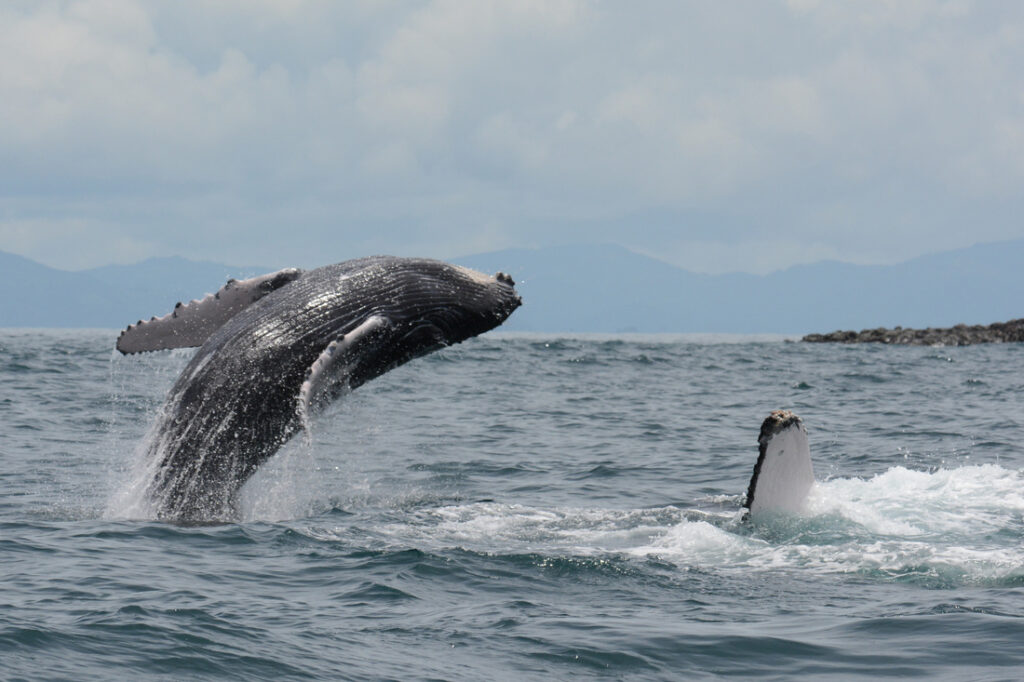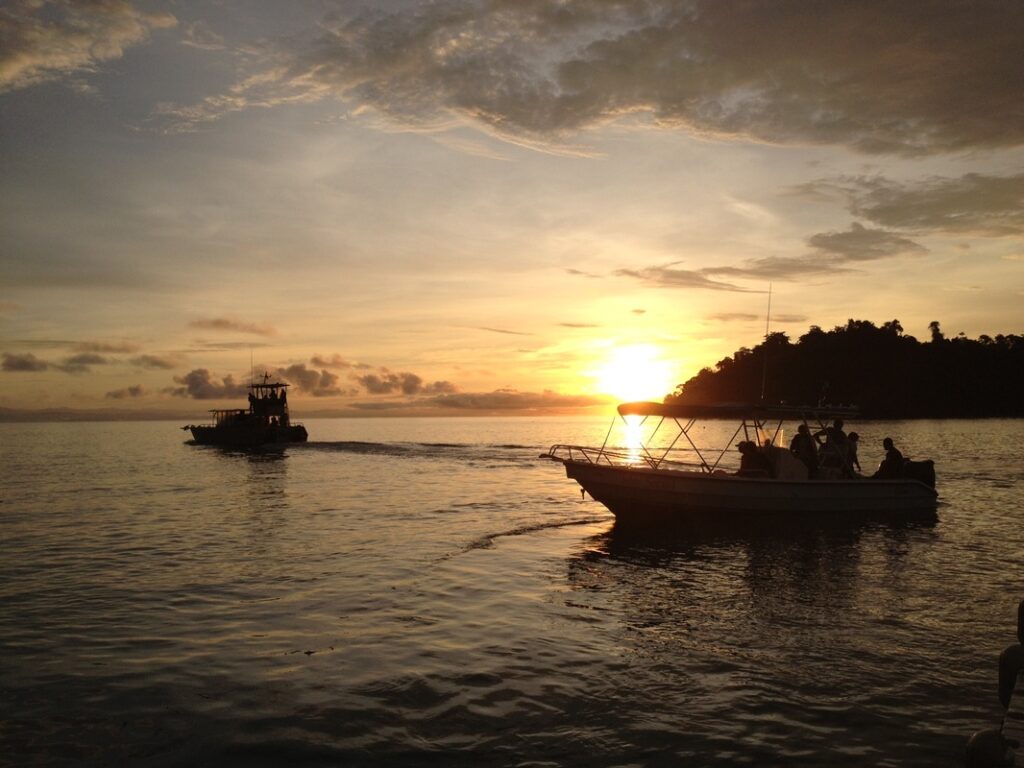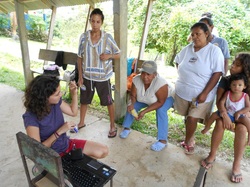This year was a smashing success! We were able to spend 28 days on the water and surveyed approximately 1400 miles (2200 km) mostly around the Islas Secas, but also near the Islas Paridas, Ladrones, and Contreras, all within the Gulf of Chiriquí.
We had 204 sightings of humpback whale groups which included a total of 455 whales and 91 calves. (In comparison, 2012 was our previous best year and we sighted a total of 277 whales that year). We photographically identified whales on 144 occasions; however the number of individuals identified will be lower since we repeatedly saw some of the same whales. We expect to have around 100 individuals identified once all of the photographs have been processed.
We were also thrilled to sight a Bryde’s whale near the Islas Contreras in addition to the usual sightings of many spotted dolphins and bottlenose dolphins. False killer whales were also sighted in our study area.
I'm afraid my blog this year may have given the impression that being a whale scientist is all about watching whales leap out of the water and taking pretty pictures in a beautiful tropical setting. Well, now that the field work is over and the equipment has been cleaned and put away the real fun begins! We will spend many months processing literally thousands of photographs, entering data, and making maps and tables representing all the data collected. The field work becomes a distant memory as we toil in front of a computer screen. Luckily, looking at the pictures always brings us back to the lovely days we spent in the field. Here are some of our favorite photos from this year that we will look at over and over to remind us of a GREAT field season!
Many thanks to the Moore Charitable Foundation, The Islas Secas, and private donors for making this year happen!
